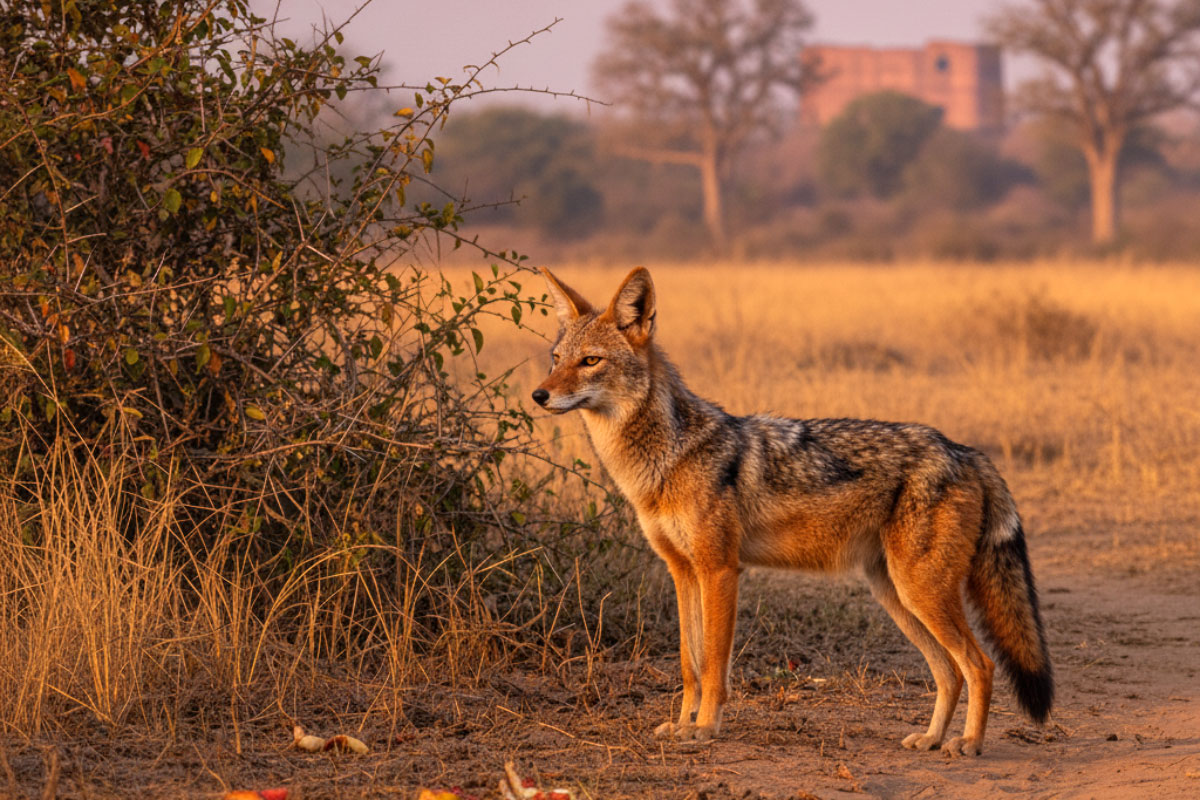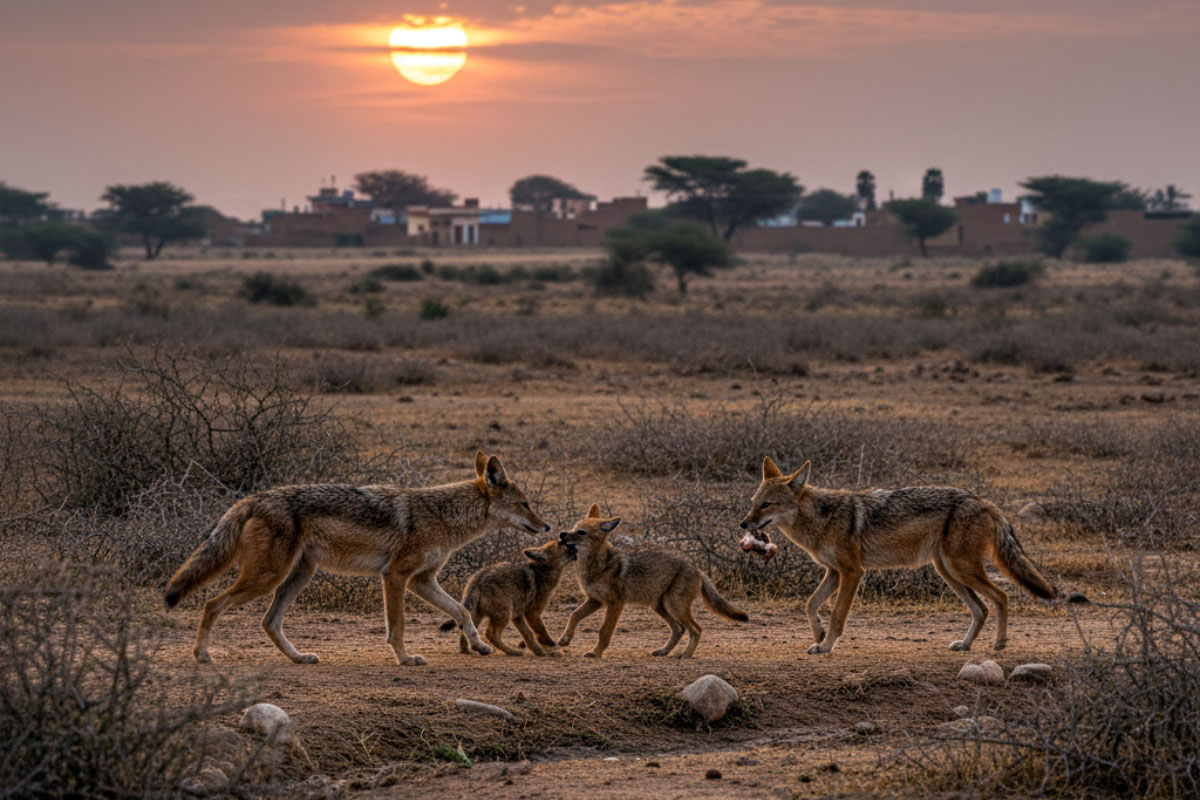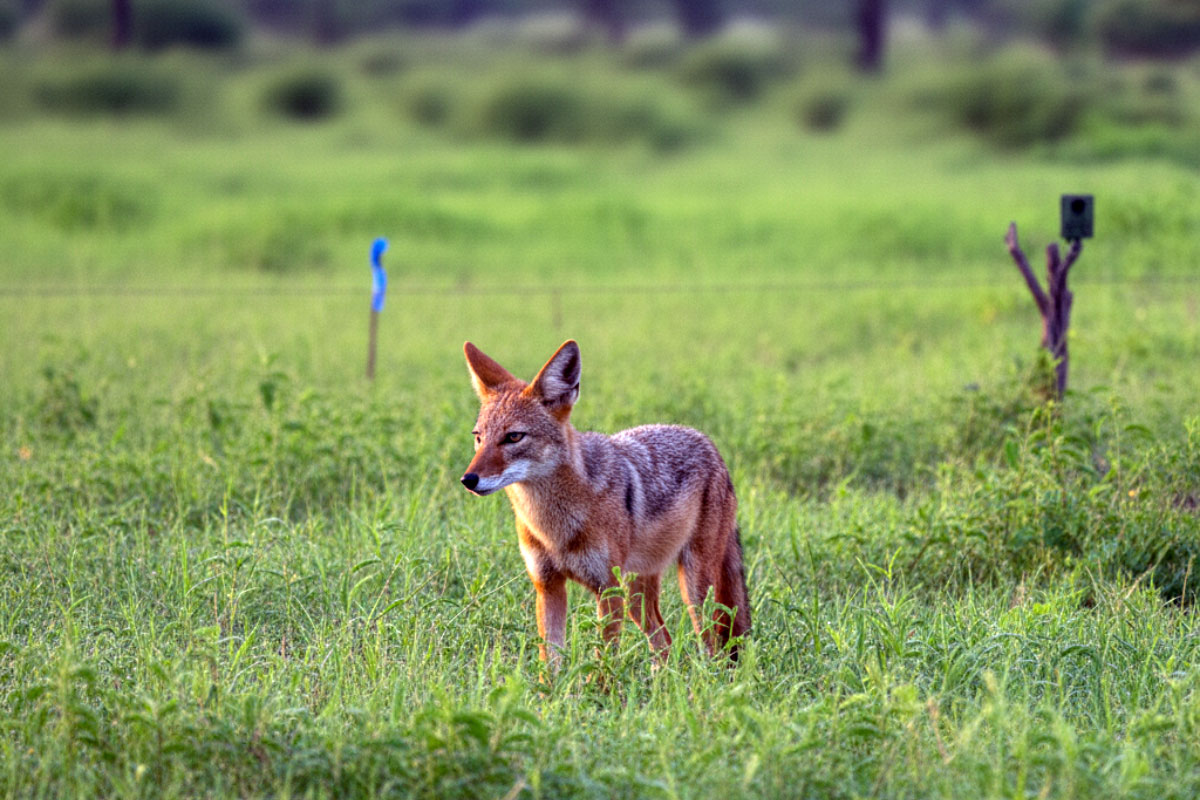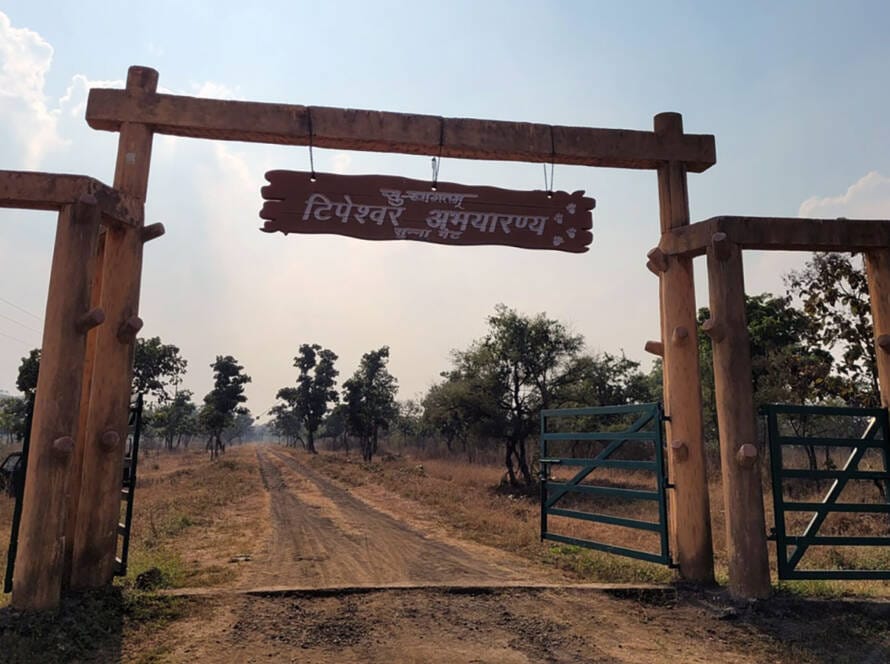Introduction

When most people think of Indian wildlife, the Bengal tiger or the Asiatic lion often comes to mind. Yet, hidden in the grasslands and scrub forests of the subcontinent, another predator thrives quietly—the jackal. Agile, intelligent, and deeply woven into India’s folklore, jackals are ecosystem balancers often overshadowed by larger carnivores. Known for their adaptability, they are found from Himalayan foothills to the dry plains of central India, including sanctuaries like Tipeshwar Wildlife Sanctuary in Maharashtra.
This guide explores their habits, habitats, and how nature lovers can responsibly spot them in the wild.
Understanding Jackals in India: An Overview
The jackal most commonly seen in India is the golden jackal (Canis aureus indicus), a subspecies that thrives across varied terrains. Unlike wolves or foxes, jackals have a lean, fox-like build with a distinctive golden-brown coat.
India is home to multiple regional variants often categorized into Himalayan, Southern, and Central Indian populations. They are versatile survivors, equally comfortable in grasslands, forests, and even near human settlements. From the deserts of Rajasthan to central India’s tiger reserves, jackals have carved out a niche as both hunters and scavengers.
Habits of Jackals in India

1. Daily Habits and Social Structure
Jackals are primarily nocturnal, with peak activity at dawn and dusk. They live in pairs or small family groups, though larger packs may form around abundant food sources. Omnivorous by nature, their diet includes rodents, hares, reptiles, fruits, and carrion, making them effective “cleaners” of the ecosystem.
2. Breeding and Family Life
Mating usually takes place in winter, with litters of 3–6 pups born in spring. Both parents actively care for their young, and older pups often help feed the new litter. This cooperative structure helps strengthen the family unit and ensures better survival in the wild.
3. Communication and Vocalizations
Jackals are highly vocal. Their eerie howls at night signal territory, warn intruders, or help members reunite. Quick yips and growls act as alerts. These calls are not only survival tools but also have cultural resonance—jackal howls often feature in Indian folklore as symbols of cunning or mischief.
Habitat of Jackals in India
1. Preferred Habitats
Jackals prefer open landscapes—scrub forests, dry deciduous forests, and grasslands. They adapt easily to agricultural fields and outskirts of villages, where food is readily available.
2. Regional Distribution
They are found almost everywhere in India, from Ranthambore National Park in Rajasthan to Kanha and Pench in Madhya Pradesh. In Maharashtra, Tipeshwar Wildlife Sanctuary is a notable habitat where jackals coexist with tigers, leopards, and sloth bears. The sanctuary’s teak forests and water bodies make it a rich environment for them.
3. Threats to Habitat
Rapid urban expansion, road construction, and shrinking forest corridors are pressing threats. Jackals often fall victim to road accidents or human-wildlife conflict when venturing too close to settlements.
How to Spot Jackals in India: A Guide for Wildlife Enthusiasts
1. Best Locations
Wildlife reserves such as Ranthambore, Kanha, Pench, and Tipeshwar are excellent places to see jackals. Early morning and late evening safari drives offer the highest chances, as this is when jackals are most active.
2. Identification Tips
Jackals can be recognized by their golden-brown coat, bushy tail, and fox-like face. They move with a quick, purposeful gait and are often seen scanning fields for rodents or scavenging near water bodies. Listening for their distinctive howls at dusk can also help locate them.
3. Ethical Viewing
Use binoculars or cameras with zoom lenses rather than getting too close. Feeding or disturbing jackals disrupts their natural behavior and can make them reliant on humans. Always follow the sanctuary guide’s insstructions to ensure a safe and respectful encounter.
Conservation Efforts for Jackals in India

Though not classified as endangered, jackals face growing threats from habitat fragmentation and human conflict. Conservation initiatives focus on preserving grasslands, maintaining wildlife corridors, and spreading awareness about their ecological importance. Sanctuaries like Tipeshwar contribute by providing safe habitats where jackals can thrive alongside larger carnivores. Supporting eco-tourism and responsible safaris plays a role in ensuring their long-term survival.
Conclusion
Jackals may not enjoy the fame of tigers or leopards, but they are vital to India’s ecological balance. Their adaptability, social behavior, and role as scavengers make them unique contributors to the health of forests and grasslands. On your next safari—whether at Tipeshwar, Kanha, or Ranthambore—look beyond the big cats. A pair of gleaming golden eyes in the twilight might just belong to one of India’s most fascinating survivors, the jackal.


